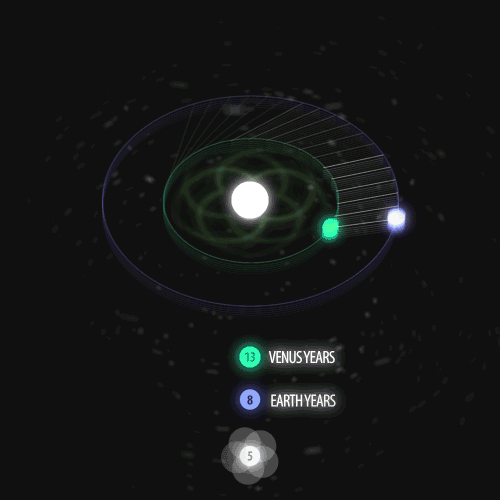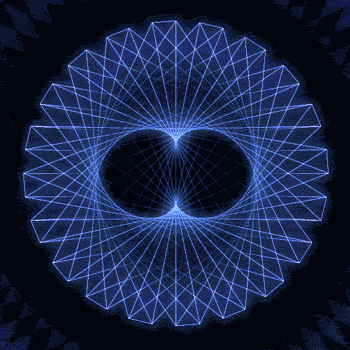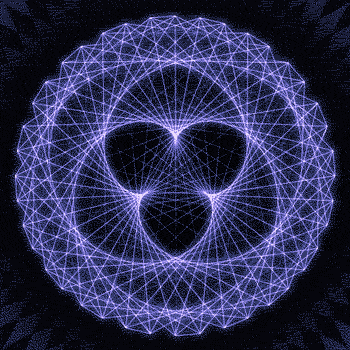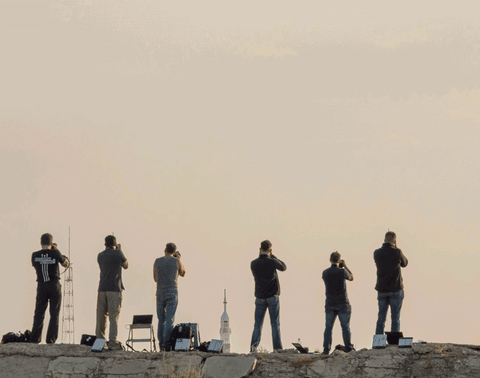Five Things To Know About NASA Astronaut Kate Rubins
Five Things to Know About NASA Astronaut Kate Rubins

Among the newest crew on the International Space Station is U.S. astronaut Kate Rubins, who will assume the role of Flight Engineer for Expeditions 48 and 49. Here are five things you should know about her:
1. She was chosen from a pool of over 3,500 applicants to receive a spot on our 2009 astronaut training class.

After being selected, Rubins spent years training at Johnson Space Center to become an astronaut. She learned how to use the complex station systems, perform spacewalks, exercise in space and more. Some training even utilized virtual reality.
2. She has a degree in cancer biology.

After earning a Bachelor of Science degree in Molecular Biology from the University of California, San Diego in 1999, Rubins went on to receive a doctorate in Cancer Biology from Stanford University Medical School Biochemistry Department and Microbiology and Immunology Department in 2005. In other words, she’s extremely smart.
3. Her research has benefited humanity.

Rubins helped to create therapies for Ebola and Lassa viruses by conducting research collaboratively with the U.S. Army. She also aided development of the first smallpox infection model with the U.S. Army Medical Research Institute of Infectious Diseases and the Centers for Disease Control and Prevention. NBD. It will be exciting to see the research come out of a mission with a world-class scientist using a world-class, out-of-this-world laboratory!
4. She is scheduled to be the first person to sequence DNA in space.

During her time at the space station, Rubins will participate in several science experiments. Along with physical science, Earth and space science and technology development work, she will conduct biological and human research investigations. Research into sequencing the first genome in microgravity and how the human body’s bone mass and cardiovascular systems are changed by living in space are just two examples of the many experiments in which Rubins may take part.
5. In her spare time, she enjoys scuba diving and triathlons…among other things.

Rubins was on the Stanford Triathlon team, and also races sprint and Olympic distance. She is involved with health care/medical supply delivery to Africa and started a non-profit organization to bring supplies to Congo. Her recent pursuits involve flying airplanes and jumping out of them – not simultaneously.

Rubins is scheduled to arrive at the International Space Station at 12:12 a.m. Saturday, July 9. After her launch on Wednesday, July 6, the three crew members traveled 2 days before docking to the space station’s Rassvet module.
Watch live coverage of docking and their welcoming starting at 11:30 p.m. EDT Friday, July 8 on NASA Television.
Make sure to follow us on Tumblr for your regular dose of space: http://nasa.tumblr.com
More Posts from Sciencephysics4all-blog and Others

Merry Christmas with geometry!

#sciphy4all #science #physics #photon #black #hole #blackhole #joke

Το Αιγαίο από το διάστημα! Το φαινόμενο sunglint στο Αιγαίο από το διαστημοσυσκευή MODIS της NASA via NASA Earth. Διαβάστε περισσότερα εδώ: https://goo.gl/LqUgJJ





Fibonacci you crazy bastard….
As seen in the solar system (by no ridiculous coincidence), Earth orbits the Sun 8 times in the same period that Venus orbits the Sun 13 times! Drawing a line between Earth & Venus every week results in a spectacular FIVE side symmetry!!
Lets bring up those Fibonacci numbers again: 1, 1, 2, 3, 5, 8, 13, 21, 34..
So if we imagine planets with Fibonacci orbits, do they create Fibonacci symmetries?!
You bet!! Depicted here is a:
2 sided symmetry (5 orbits x 3 orbits)
3 sided symmetry (8 orbits x 5 orbits)
5 sided symmetry (13 orbits x 8 orbits) - like Earth & Venus
8 sided symmetry (21 orbits x 13 orbits)
I wonder if relationships like this exist somewhere in the universe….
Read the Book | Follow | Hi-Res -2- -3- -5- -8-

LIFTOFF!
On July 7, three crew members launched from Earth; headed to their new home on the International Space Station.
Crewmembers Kate Rubins of NASA, Anatoly Ivanishin of Roscosmos and Takuya Onishi of the Japan Aerospace Exploration Agency (JAXA) will spend approximately four months on the orbital complex, returning to Earth in October.
Photo Credit: (NASA/Bill Ingalls)
Make sure to follow us on Tumblr for your regular dose of space: http://nasa.tumblr.com
The history of Hubble - Η ιστορία του διαστημικού τηλεσκοπίου που έχει γράψει ιστορία με τις φωτογραφίες του, Hubble.
Can You #SpotHubble?
Hey Tumblr! We’re Inviting You to #SpotHubble

Since its launch in 1990, the Hubble Space Telescope has sent back mind-blowing images that not only changed our understanding of our universe, but also changed where we see our universe.

Hubble is more than a science instrument; it’s a cultural phenomenon! Take a moment to think about where you’ve seen the Hubble Space Telescope or Hubble images in your daily life.

Maybe you walk by a mural inspired by Hubble images everyday on your way to work.

Perhaps you’ve even created art based on Hubble images.

We want to see the Hubble impact in your life! Share your photos with us on Instagram, Twitter, Flickr and Facebook. If a #SpotHubble image catches our eye, we may share your post on our NASA Hubble social media accounts.

Here’s how to #SpotHubble!
There are four social media platforms that you can use to submit your work:
Flickr: Submit your photos to the Spot Hubble Flickr Group
Instagram: Use the Instagram app to upload your photo, and in the description include #SpotHubble and #NASAGoddard
Twitter: Share your image on Twitter and include #SpotHubble in the tweet
Facebook: Share your image on Facebook and include #SpotHubble in the post
Please note, submissions are subject to certain terms and conditions.
Make sure to follow us on Tumblr for your regular dose of space: http://nasa.tumblr.com

Biochemists at the University of California San Diego have developed artificial cell membranes that grow and remodel themselves in a manner similar to that of living mammalian cells.
The achievement, detailed in a paper published in this week’s issue of the Proceedings of the National Academy of Sciences, follows the successful design last year in the same laboratory of artificial, or synthetic, cell membranes capable of sustaining continual growth. The two developments now bring the researchers closer to mimicking all of the properties of living mammalian cell membranes with synthetic components.
That’s important because synthetic membranes that accurately mimic the behavior of living mammalian cell membranes could be used by biomedical researchers to develop more effective drugs that target membrane proteins and better understand the chemical changes that occur in dysfunctional membranes during disease.
“While artificial membranes have been used to model the properties of native membranes, previous methods have not been able to mimic lipid membrane remodeling,” said Neal Devaraj, an associate professor of chemistry and biochemistry at UC San Diego who headed the research team for both studies. “In our latest study, we show that reversible chemical reactions can be harnessed to achieve spontaneous remodeling of lipids in synthetic membranes.”
Continue Reading.
Edison’s Cradle?

Supplementing the Newton’s Cradle post, Behold the Edison’s cradle ! :)
As part of his senior thesis exhibition at Musashino Art University in Tokyo, art student Yasutoki Kariya re-imagined the ubiquitous desktop gadget, Newton’s Cradle, using a lovely sequence of light bulbs.
Entitled Asobi(which translates roughly as “playing“) the 11-bulb installation creates a visual interpretation of the popular toy named after Sir Isaac Newton demonstrating his third law of motion regarding momentum: that for every action there is an equal and opposite reaction.

The ingenious deception.
However, instead of actual energy created by the kinetic force of steel balls, Kariya devised a method for using programmed light and two surreptitiously placed pistons to create this purely visual experience that’s arguably more mesmerizing than the original concept.
-
 annae1aax liked this · 5 months ago
annae1aax liked this · 5 months ago -
 colorfulcollectorpirate liked this · 2 years ago
colorfulcollectorpirate liked this · 2 years ago -
 keenportraitnutritionprofessor liked this · 6 years ago
keenportraitnutritionprofessor liked this · 6 years ago -
 giovannamcmiller liked this · 6 years ago
giovannamcmiller liked this · 6 years ago -
 no-pretence-of-something liked this · 6 years ago
no-pretence-of-something liked this · 6 years ago

